
views
Setting Up a Routine
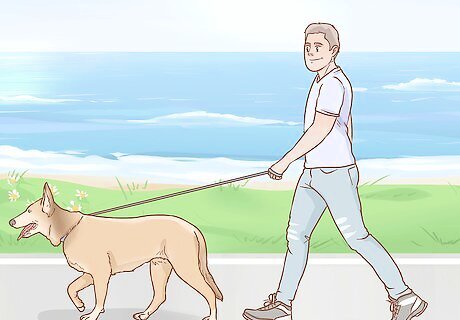
Take your dog outside frequently. This is the most important thing you can do to teach your dog to relieve themself outside. While it may seem excessive, try to take them outside as frequently as possible, about every half an hour. Stick to a schedule and try not to miss even one designated "outside time," since your dog will learn to associate these outside trips with relieving themself. If you're training a puppy, you'll need to take them outside more frequently. Puppies have small bladders and can't physically hold their pee for long periods of time.
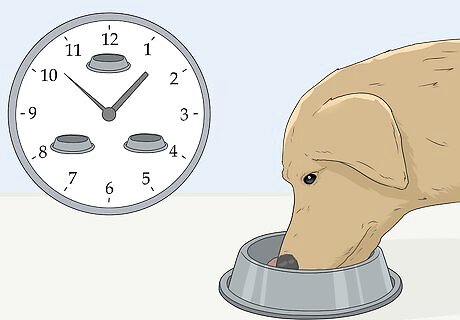
Put your dog on a feeding schedule. Feed your dog at the same time in the morning and at night, then wait 20 to 30 minutes before taking him outside. Having a feeding schedule will make it easier to predict when your dog will have to go to the bathroom, making housetraining easier. Puppies need to be fed three times a day. If you have a puppy, schedule a regular lunchtime feeding as well. Again, a puppy should be given more opportunities to go outside, since it has a smaller bladder.
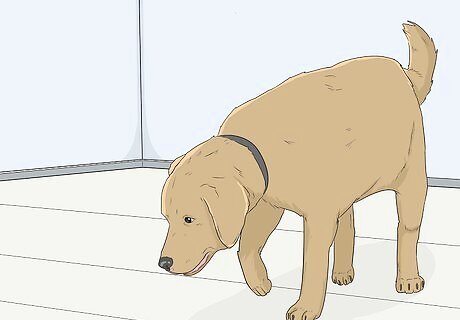
Learn to interpret signs that your dog has to go. Signs include walking around stiffly, sniffing the floor as though they’re looking for a place to go, holding their tail in a funny position, and so on. If your dog shows signs that he needs to go to the bathroom, take them outside right away, even if it's before the designated time to go out. Include a verbal cue, such as saying, "outside" before you take them out. Eventually, you'll be able to ask them if they need to go outside, simply by saying the word.Tip: Remember to take your dog outside 20 to 30 minutes after every meal and after they drinks water since they’ll likely have to go to the bathroom. When you first start training your dog to go outside, you're teaching them that when they feel the urge, that means it's time to go outside. Each time your dog successfully goes outside, the idea that bathroom equals outside is reinforced.
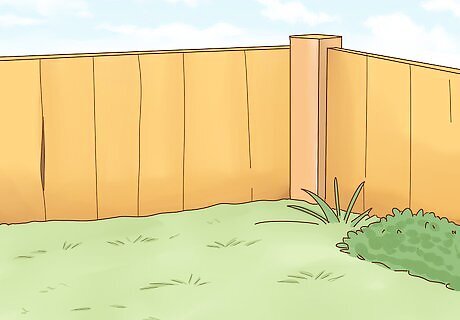
Pick a designated spot outside. Choose in your backyard, or if you don't have one, near a green patch of grass somewhere. Take your dog back to the same place each and every time you go outside. Dogs are creatures of habit. You can help your dog feel comfortable and less anxious by picking a good spot for them to use as their "bathroom" each time they go out. Use a verbal cue such as, "go potty" when you've reached the spot. They’ll learn to associate it with the place. Remember to follow your city's ordinances regarding picking up after your pet. If you have no choice but to let your dog use a public spot as their bathroom, you'll need to bring a bag so you can pick up the waste and dispose of it.
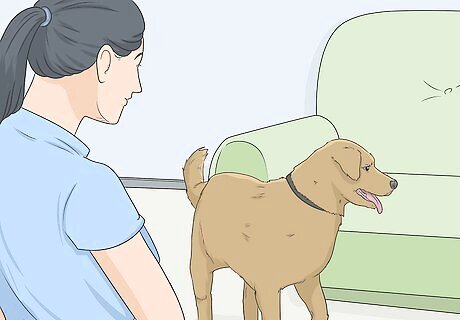
Supervise your dog during house training. When you first bring your dog or puppy home, plan to spend a lot of time watching your pet to make sure they don’t go to the bathroom indoors. This supervisory period is imperative because it enables you to teach the dog to quickly associate the urge to use the bathroom with going outside. Intercepting the dog or puppy before they go in the house is the best way to house train quickly. If you can't stay home all day to supervise your dog, you'll need to have someone else come over to take the dog out several times during the day. Make sure the person knows to take the dog to the designated spot each time. EXPERT TIP Sheri Williams Sheri Williams Certified Dog Trainer Sheri Williams is a Certified Dog Trainer and Behaviorist and the Owner of sheriwilliams.com, a business that specializes in teaching veterans how to turn their dogs into service dogs or emotional support animals to assist with PTSD. Based in the Los Angeles, California metro area, Sheri has over 20 years of dog training experience and also runs a general dog training practice specializing in rehabilitating dogs through positive reinforcement training techniques. She is certified by The Animal Behavior and Training Association. Sheri Williams Sheri Williams Certified Dog Trainer Become an expert through in-person training. To become skilled at dog training, it's helpful to do an in-person training program rather than learning online. Real-life experience working directly with the dogs and trainers is invaluable for picking up the nuances of dog behavior and training techniques.
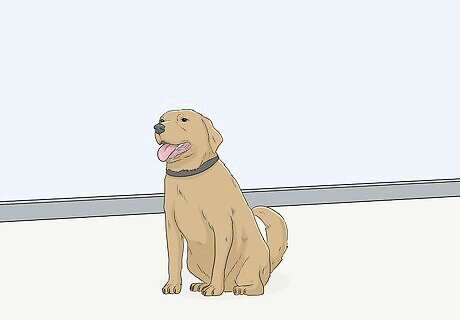
Keep your dog in a crate at night and when you're away. If you leave your dog or puppy free to roam the house at night, they are sure to end up soiling the floor. Keeping them in a cozy crate at night and when you're gone reduces the chance that they’ll make a mess. Dogs don't like to soil their dens, so your dog will try to wait until they can go outside to relieve themself.Note: Dogs should see their crates as safe spaces and enjoy spending time there. Keeping your dog in a crate is not meant to be a form of punishment. Never punish your dog by banishing them to the crate, or they’ll come to associate it with fear instead of comfort. Do not let your dog stay in their crate for too long before taking them outside. If you wait too long, they’ll have no choice but to relieve themself in the crate. Dogs need plenty of exercise and playtime too, so you should never leave them crated for more than a few hours at a time or overnight.

Clean up messes right away. If your dog makes a mess in the house (and they definitely will), clean it up right away and use a cleaning solution to get rid of the scent. If your dog smells an old mess in a certain spot, they’ll think of that as a bathroom spot. Do not punish the dog for making a mess. Just clean it up and stick to the schedule.
Rewarding the Dog for Good Behavior

Give your dog treats and praise each time he successfully goes outside. Dogs learn best through positive reinforcement and they quickly learn the best way to get it. Every time your dog is able to go to the bathroom in their designated spot, reward them with a little treat, lots of praise, and a scratch on the head.Tip: Be consistent when it comes to rewarding your dog. Do it every single time they go to the bathroom in the bathroom spot. You can, of course, reward your dog for other things, like learning how to sit and stay. All good behavior should be rewarded.
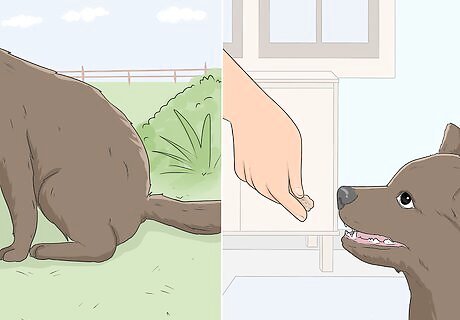
Time the reward correctly. When you're treating your dog for going to the bathroom in their spot, give them a treat and praise right after they finish using the restroom. Don't give it too early or too late, or they won't associate it with going to the bathroom in the right spot.

Consider using a bell or chime to aid in training. Some people have had success using the bell method instead of a treat. When your dog goes to the bathroom in their spot, you ring a bell or pleasant-sounding chime as part of their reward. The dog will come to look forward to the sound of the chime, which should only be used in this specific situation. The drawback here is that, eventually, you won't want to keep using a chime or bell every time your dog goes to the bathroom. Initially phasing it out might be confusing to the dog.
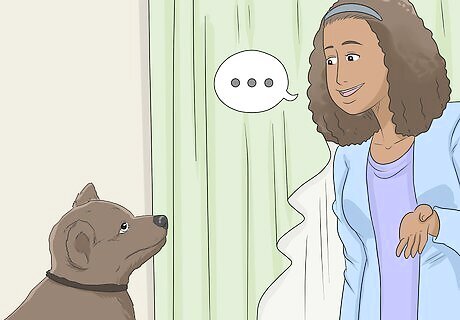
Keep your voice and manner light and friendly. Whenever you're taking your dog to the bathroom or talking about it, keep your voice light and pleasant. Never raise your voice or take on a menacing tone, because your dog will start to associate their bodily functions with punishment and fear. If your dog makes a mess inside, you can withhold praise, but don't yell at the dog or make them feel ashamed. If using verbal cues, such as "outside", "go potty", or "good dog" be consistent. The repetition of these words along with the action and environment will reinforce where you want your dog to relieve themself.
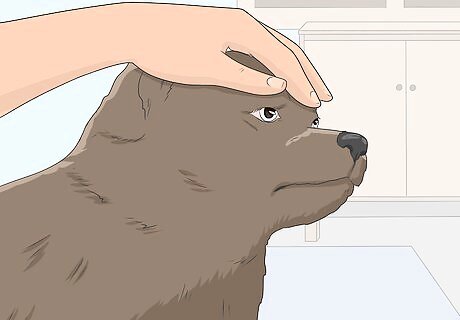
Never punish the dog for making a mess. Dogs don't respond well to punishment. It scares them and instead of learning to perform well for you, they learn to fear you. Never yell, hit, or do anything that could cause your dog to feel afraid. Do not rub your dog's face in their mess. Contrary to some beliefs, this does not teach a dog not to go to the bathroom in the house. The dog will not understand what you're doing and you'll just end up scaring him.
Paper Training a Dog in an Apartment

Pick an out-of-the-way spot that's easy for your dog to access. If you live on a high rise, you won't be able to make it outside every time your dog needs to go to the bathroom. Pick a spot in your apartment that isn't right in the middle of your living space, but is also easy for your dog to access at any time. A corner of the laundry room or kitchen works well. Choose a spot on hardwood or vinyl flooring, rather than carpet.

Line the designated spot with newspaper or training pads. A newspaper is a cheap material you can use to create a bathroom mat for your dog. Absorbent training pads are also available in pet stores. Choose the option that's most convenient for your household. Note: Be aware that your dog may get used to only relieving themself on a newspaper if that's all that you put down. You could also use a dog litter tray. If you'll also take your dog outside to relieve themself, consider filling the tray with soil. This way, the dog will learn that it's acceptable to relieve themself outdoors and indoors.
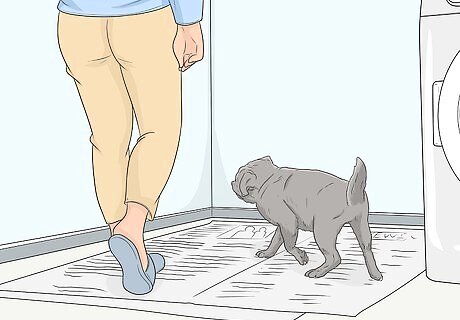
Take your dog to the spot on a regular schedule. Take your dog to the bathroom mat on a strict schedule, just as you would if you were training your dog to go to a spot outside. Frequently walk them to the mat throughout the day and each time they show signs of needing to relieve themself.
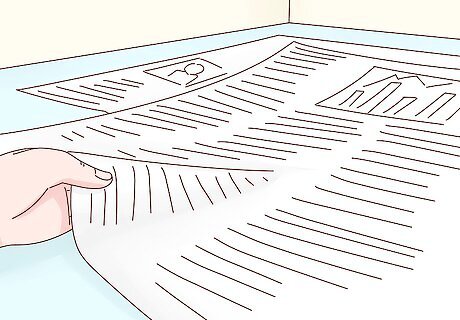
Change the mat often but leave a little spot of dried urine there. The scent of the urine will help your dog remember that the mat is the place to go to the bathroom. Remove feces right away, but leave a sheet of newspaper or a small bit of padding with urine on the clean mat so your dog will naturally know where to go.
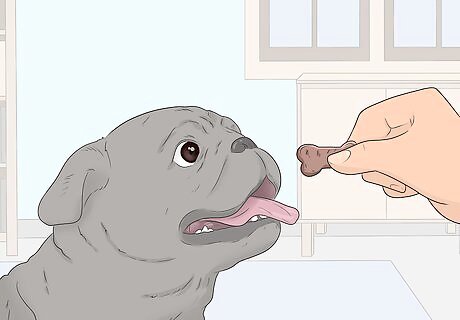
Reward your dog for going in the spot. Each time they successfully go on the mat, reward them with a treat, petting, and praise. They’ll eventually come to associate going to the bathroom on the mat with positive feelings, and they’ll start going there without your help before too long.




















Comments
0 comment